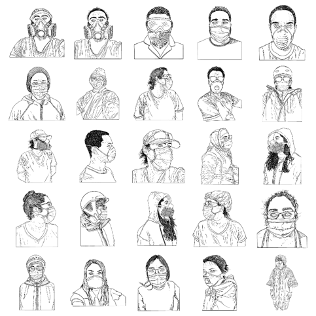Thoughts and Feelings in Cognitive-Behavioral Therapy (CBT) for Social Anxiety
Cognitive-behavioral therapy (CBT) has repeatedly been shown to be the most effective treatment for social anxiety disorder for the large majority of people. A central principle in CBT is that what we feel—such as social anxiety—is created not directly by a situation we experience, but by our thoughts and perceptions of that situation (in combination with our physiology). Two different people can experience the same situation and have very different feelings in reaction due to thinking about it differently. Likewise, one person can experience essentially the same situation at two different times, and feel very differently in reaction—socially anxious or self-confident, for example—depending on the way s/he thinks about it.
Therefore, learning to modify the way we think is one major component of cognitive-behavioral therapy for social anxiety, and for many other problems, as well.
Mindfulness and Cognitive Restructuring for Social Anxiety
 As I discussed in part 1 of this blog post, MINDFULNESS is one strategy to modify distressing thinking: paying attention to the situation in the moment—the conversation and activity—with an attitude of interest, rather than judgment. Using mindfulness, we are not dealing with the CONTENT of our thoughts; rather, we are changing our RELATIONSHIP with our thoughts: learning to treat them like background noise (something that we’re aware of but not paying attention to).
As I discussed in part 1 of this blog post, MINDFULNESS is one strategy to modify distressing thinking: paying attention to the situation in the moment—the conversation and activity—with an attitude of interest, rather than judgment. Using mindfulness, we are not dealing with the CONTENT of our thoughts; rather, we are changing our RELATIONSHIP with our thoughts: learning to treat them like background noise (something that we’re aware of but not paying attention to).
But what if we believe our disturbing thoughts are true—or partly true—or we’re worried they may be true and just don’t know? Chances are, we won’t be able to focus very mindfully in such circumstances and will instead pay a lot of attention to our distressing thoughts and the upsetting feelings they help to cause. That’s where the other major strategy to modify distressing thinking comes in very handy: COGNITIVE RESTRUCTURING. Using this skill, we are testing the content of our thoughts against real world evidence and modifying them into constructive ways of thinking that are more realistic and helpful.
Cognitive restructuring isn’t the power of positive thinking. Many things in life are, after all, rather negative or only partially positive, and often times we don’t know how negative or positive something will be. Instead, cognitive restructuring is the power of realistic and helpful thinking. Let’s illustrate how it works in a social anxiety example:
Safety Behaviors and Vicious Cycles in Social Anxiety
Imagine you are invited by a good friend to attend a party, but you expect to know hardly anyone there besides your friend. You feel a lot of anticipatory anxiety about attending because your mind is flooded with hot thoughts such as: “I won’t know what to say. I might say something stupid. The conversations will be awkward. I’ll appear nervous. As a result, I’ll make a bad impression and embarrass myself with the stranger and with my friend.”
This mindset not only intensifies your anxiety greatly; it also leads you to engage in safety-seeking behaviors that tend to backfire, and make your experience go badly. You might avoid going all together, and make up some excuse to tell your friend. Or you go but stand by the sidelines, avoiding eye contact, looking at your phone a lot, not greeting anyone, not joining any conversations already in progress. If some friendly person does try to talk to you, you may focus on scripting what to say next, critiquing what you said last, worrying about what the other person is thinking of you, and asking lots of questions to keep the focus off of you. As you can imagine—and may already have experienced in your own life—such safety-seeking behaviors result in vicious cycles: few conversations, awkward and brief conversations, and feeling very badly about the party and about yourself. All this reinforces your negative core beliefs about yourself—I’m socially inept, or I’m not good at meeting people—and make it more likely for you to feel anxious and behave in a self-defeating ways at the next social activity.
Social Anxiety Experiments in Cognitive-Behavioral Therapy (CBT)
The good news is that you can learn to do cognitive restructuring before the party—or before whatever social anxiety trigger you are about to face—and, in combination with mindful focus, have a much more positive experience as a result. For example, using a cognitive restructuring worksheet to prepare for the party, you may come up with the following constructive thoughts to counter your anxiety-inducing hot thoughts: “As long as I focus on taking interest in the conversations and the people, the conversations generally go well enough and most people seem to enjoy talking to me. Occasional awkwardness or silly comments are normal and have no real impact so long as I return my attention to continuing the conversation. Not everyone will like me, and I don’t like everyone. But I’m likely to have a pretty good time if I focus on engaging in the conversations rather than on evaluating myself.”
Another step in cognitive restructuring is to identify behavioral goals: constructive action steps as an alternative to your self-defeating safety-seeking behaviors. For the party, you might set the following behavioral goals to work on: make eye contact and smile at new people; say hello and introduce yourself; join group conversations already in progress and react to what is being said; focus mindfully on the conversations you’re in, and treat your thoughts like background noise; elaborate a little when you speak, and say more about yourself. Going to the party and working on the goals become an experiment to test and modify your hot thoughts based on the evidence you gather, just like a scientist conducts experiments to gather evidence to test and modify hypotheses.
If you attend the party reading these constructive thoughts before, and working on these constructive behaviors during, chances are you will gather this type of evidence refuting your hot thoughts: you’ll probably have reasonably flowing conversations with a number of people; some people will behave as though they are enjoying talking to you; the awkward or embarrassing moments will probably be infrequent and inconsequential. In addition, you’ll probably leave the party not only having had a good time, but also feeling better about yourself and more confident about the next social activity.
Putting It Together: Mindfulness and Cognitive Restructuring for Social Anxiety
People vary as to whether they find mindfulness or cognitive restructuring to be more helpful in learning to overcome their social anxiety. In my experience, most people find both strategies helpful in different ways and at different times. Typically, cognitive restructuring is good to use before or after a social anxiety trigger (eg. a party, meeting, assertion), and mindfulness is important to use during the situation in which you are anxious. In an upcoming blog post, I’ll take you through the nuts and bolts of how to carry out both mindfulness and cognitive restructuring for social anxiety.
Larry Cohen, LICSW
Cofounder, National Social Anxiety Center; Director, NSAC District of Columbia
larrycohen@socialanxietyhelp.com; 202-244-0903
Share this blog post.











